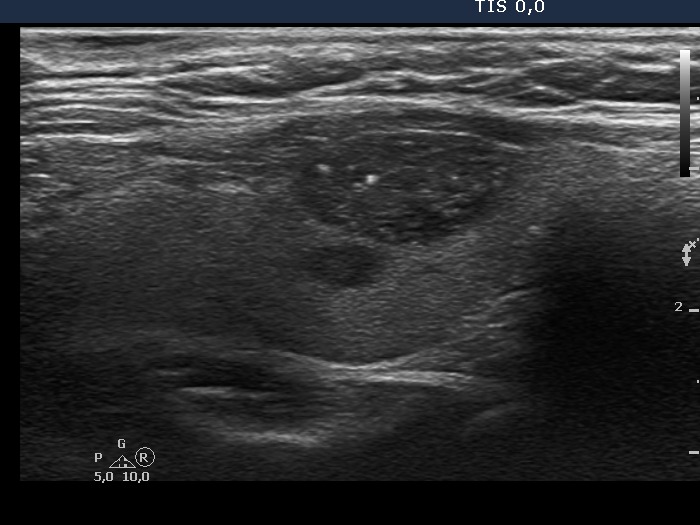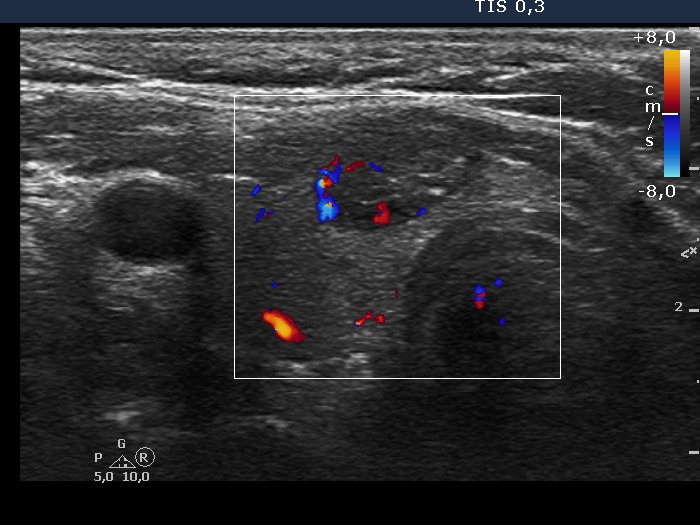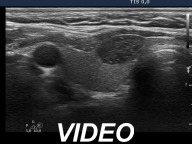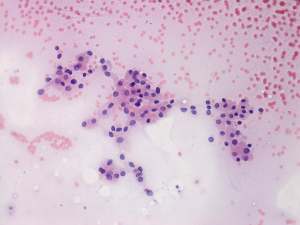The role of complex diagnosis - oxyphilic lesions - Case 7. |
|
Clinical presentation: A 41-year-old woman was sent for aspiration cytology. She discovered a lump in the right thyroid 3 months before the examination.
Palpation: a firm nodule in the right lobe.
Hormonal examination: euthyroidism with TSH 1.86 mIU/L.
Ultrasonography revealed a hypoechogenic nodule with microcalcifications in the ventromedial part of the right lobe. The nodule did not present halo sign and had a type 3 vascular pattern, i.e. intranodular blood flow. The intranodular hyperechogenic figures involve both granules and lines, therefore these correspond to proliferation of connective tissue.
Cytology itself was very suspicious for a Hürthle-cell tumor.
A combined ultrasound-cytological diagnosis was benign Hürthle-cell metaplasia with less than 1% risk of carcinoma.
We advised regular follow-up instead of surgery. The patient decided to undergo on surgery.
Histopathology disclosed benign hyperplastic nodules with extensive oxyphilic metaplasia.
Comment.
Original comment. This is an excellent example for the potential of a new way of thinking. Both the ultrasound and the cytological pattern was itself suspicious but not of the same tumor. The increased intranodular blood flow and the presence of microcalcifications raised the possibility of a papillary carcinoma which was very unlikely on cytological pattern because of the lack of inclusions and grooves. And conversely, the cytological pattern corresponded to a follicular-type oxyphilic tumor, however considering the lack of halo sign and perinodular blood, the risk of a follicular tumor was surely less than 5%.
Second comment two years later. While preparing a new section of the homepage, the intranodular hyperechogenic figures, I've reevaluated many cases including this one. And it is clear, that I had misinterpreted the hyperechogenic figures present in the larger nodule. It is clear that hyperechogenic lines and granules coexisted, therefore these must correspond not to microcalcifications but to connective tissue. On the other hand, this correction does not affect other parts of the first coment.










